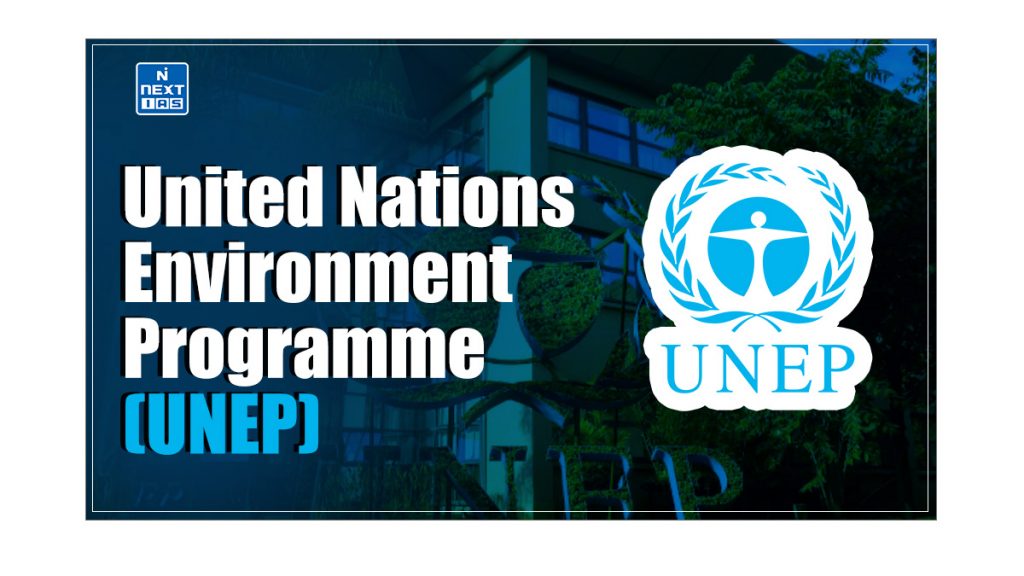
The United Nations Environment Programme (UNEP) is the leading international environmental organisation, setting the global environmental agenda and promoting the implementation of sound environmental policies. Its wide-ranging works have made significant contributions to the conservation of wetlands as well as biodiversity. This article aims to provide a comprehensive overview of the United Nations Environment Programme (UNEP), its objectives, functions, key areas of work, and other related aspects.
About United Nations Environment Programme (UNEP)
- The United Nations Environment Programme (UNEP) is an international environmental authority that works to establish a global environmental agenda and promote the efficient implementation of the environmental dimension of the United Nations Sustainable Development Programme.
- UN Environment Programme is the leading global environmental authority that sets the global environmental agenda, promotes effective implementation of the environmental dimension of sustainable development within the UN system, and acts as an authoritative advocate for the global environment.
- Overall, it plays a critical role in addressing environmental issues at the global and regional levels.
- It is headquartered in Nairobi and is headed by an Executive Director.
Establishment of UN Environment Programme
- The increasing pollution levels during the 1960s and 1970s led international leaders to consider establishing laws and regulations for environmental issues, similar to the frameworks of the International Labour Organisation (ILO) and the World Health Organisation (WHO).
- These concerns were addressed at the 1972 Stockholm Conference (also known as United Nations Conference on Human Environment).
- The Conference led to the adoption of the Stockholm Declaration on the Human Environment.
- The Conference also resulted in the formation of a management body for these concerns, which came to be called the United Nations Environment Programme.
Focus Areas of UNEP
The key areas focused by the United Nations Environment Programme include the following:
- Climate Change
- Ecosystem management
- Disasters and conflicts
- Environmental governance
- Resource efficiency
- Chemicals and waste
- Environment under review
Functions of UN Environment Programme
- The UN Environment Programme engages in developing global conventions concerning the environment and related issues.
- It hosts the secretariats of various conventions, such as UN Convention on Biological Diversity (UNCBD), CITES, Minamata Convention, etc.
- It promotes environmental science and related information.
- It finances and implements developmental projects related to the environment.
- It engages with national Governments, NGOs, etc. in relation to environmental policy and implementation.
- It also formulates treaties and guidelines in the domain of international trade in harmful chemicals, international waterways pollution and transboundary pollution of air.
- It also awards and honours individuals as well as institutions that do stellar work in this field.
Major Initiatives of UN Environment Programme
Some of the major initiatives of the UN Environment Programme are discussed below.
Clean up the World
- Clean Up the World is a global environmental campaign launched by the United Nations Environment Programme in 1993.
- This initiative mobilises millions of volunteers across the globe to take action to clean up their local environments, reduce waste, and promote sustainable practices.
Billion Tree Campaign
- The Billion Tree Campaign was a global reforestation initiative launched by the United Nations Environment Programme in 2006.
- The campaign aimed to combat climate change, restore degraded landscapes, and enhance biodiversity by encouraging the planting of billions of trees worldwide.
Seal the Deal
- The Seal the Deal initiative was a global campaign launched by the United Nations in 2009, ahead of the Copenhagen Climate Change Conference (COP15).
- The campaign aimed to galvanise public support and pressure world leaders to agree on a fair, ambitious, and legally binding climate agreement.
Awareness and Preparedness for Emergencies at Local Level (APELL)
- Awareness and Preparedness for Emergencies at Local Level (APELL) is an initiative developed by the United Nations Environment Programme aimed at enhancing local communities’ ability to prepare for and respond to industrial accidents and environmental emergencies.
- The APELL program was launched in 1988 following several major industrial disasters that highlighted the need for better emergency preparedness at the local level.
TUNZA
- The Tunza Initiative is a program launched by the United Nations Environment Programme aimed at engaging and empowering youth around the world to take action on environmental issues.
- The word “Tunza” comes from a Kiswahili term meaning “to care for” or “to nurture,” reflecting the initiative’s focus on fostering a sense of responsibility and stewardship for the environment among young people.
Faith for Earth
- The Faith for Earth Initiative is an initiative by the United Nations Environment Programme aimed at fostering collaboration between faith-based organizations and the environmental community to promote sustainable development and environmental stewardship.
- Launched in 2017, this initiative recognises the significant influence that religious communities and leaders have in mobilising action on environmental issues.
Major Reports Published by UNEP
Some of the major reports published by the UN Environment Programme are listed as follows.
Global Environmental Outlook (GEO)
- Global Environmental Outlook (GEO) is published by the UNEP every four years.
- It is a comprehensive assessment of the global environment.
- It provides insights into environmental trends, challenges, and opportunities.
Emissions Gap Report
- It analyses the gap between current greenhouse gas emissions and those needed to achieve climate goals.
- It also provides recommendations for closing the emissions gap.
Adaptation Gap Report
- It evaluates the progress in adaptation to climate change and the gap between current adaptation efforts and what is needed to cope with climate impacts.
- It also highlights challenges and provides guidance on enhancing adaptation strategies.
Global Biodiversity Outlook (GBO)
- It assesses global biodiversity trends and the effectiveness of conservation efforts.
- It also identifies key threats to biodiversity and provides recommendations for action.
Global Air Quality Assessment
- It assesses air quality trends and health impacts worldwide.
- It also provides recommendations for improving air quality.
Conclusion
In conclusion, the United Nations Environment Programme (UNEP) is a key international environmental organisation that plays a crucial role in protecting the environment and promoting sustainable development. Its work on climate change, biodiversity conservation, and sustainable consumption and production has had a significant impact on global efforts to address environmental challenges.
Frequently Asked Questions (FAQs)
What is the United Nations Environment Programme UNEP 1972?
The UN Environment Programme is an international environmental authority that works to establish a global environmental agenda and promote the efficient implementation of the environmental dimension of the United Nations Sustainable Development Programme.
Where is the headquarter of the United Nations Environment Programme (UNEP) located?
It is headquartered in Nairobi, Kenya.
Who founded the UNEP?
It was founded at 1972 Stockholm Conference (also known as United Nations Conference on Human Environment).
In which conference was UNEP formed?
The UN Environment Programme was founded at the United Nations Conference on Human Environment, 1972 (also known as Stockholm Conference).
When did India join UNEP?
India has been engaging with the UN Environment Programme since 1972.
How many countries are members of UNEP?
At present, the UN Environment Programme has around 193 member states.
Who governs UNEP?
The governing body of the UN Environment Programme is the United Nations Environment Assembly (UNEA).






